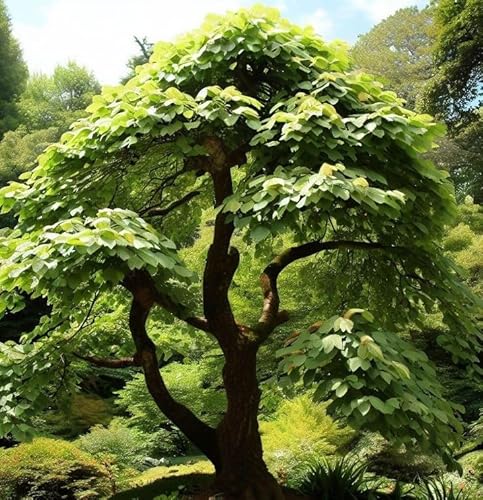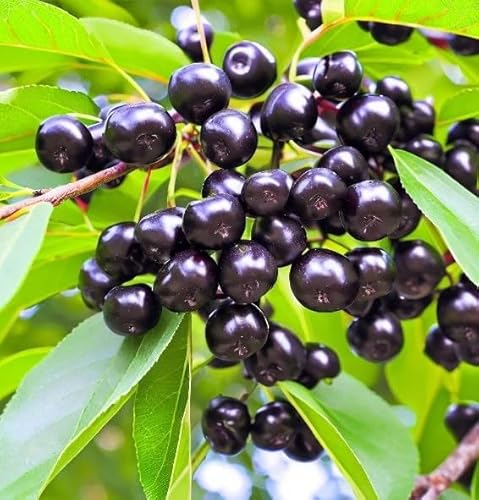I’m excited to help you transform your outdoor space with the perfect trees. Choosing the right trees can make your landscape vibrant and inviting. With so many options available, it can feel overwhelming, but I’m here to guide you through the process.

Imagine walking through your yard surrounded by lush greenery and blooming flowers. The right trees not only enhance beauty but also provide shade and privacy. Together, we’ll explore how to select trees that fit your climate, soil, and personal style.
Benefits of Choosing the Right Trees
- Aesthetic Appeal: Selecting trees that complement my landscape enhances its visual beauty, making my outdoor space more inviting.
- Shade and Energy Efficiency: Proper tree placement provides shade, reducing my reliance on air conditioning and lowering energy bills.
- Air Quality Improvement: The right trees filter pollutants and release oxygen, leading to cleaner air around my home.
- Privacy and Noise Reduction: Strategically chosen trees act as natural barriers, offering me privacy and minimizing external noise.
- Biodiversity Support: Diverse tree selection attracts wildlife, promoting a balanced ecosystem in my garden.
- Property Value Increase: A well-landscaped area with suitable trees boosts my property’s market value.
Factors to Consider When Selecting Trees
Choosing the right trees involves evaluating several key factors. Here’s what I consider essential:
Climate and Hardiness
I select trees that match my local climate by referencing USDA Hardiness Zones. For example, live oaks thrive in warmer zones, while birches handle cooler climates well. Ensuring trees are hardy prevents stress and promotes healthy growth.
Soil Conditions
I evaluate my soil’s pH and drainage to choose compatible tree species. Maples prefer slightly acidic, well-drained soil, whereas ash trees excel in neutral to slightly alkaline, moisture-retentive conditions. Matching soil conditions supports robust tree development.
Space and Growth Requirements
I assess each tree’s mature size to avoid future space issues. A 40-foot oak needs more room than a 15-foot Japanese maple. Planning for height and spread ensures trees fit well without interfering with structures or power lines.
Popular Tree Species for Landscapes
Choosing the right tree species can transform your landscape into a stunning and functional space. Here are some popular options to consider:
Deciduous Trees
Deciduous trees shed their leaves annually, offering seasonal interest and various benefits.
- Oak: Provides strong shade and supports local wildlife.
- Maple: Known for vibrant autumn colors and sturdy structure.
- Birch: Features attractive bark and graceful form.
These trees thrive in well-drained soils and adapt to a range of climates, enhancing both aesthetics and environmental health.
Evergreen Trees
Evergreen trees retain their foliage year-round, maintaining greenery and structure in your landscape.
- Pine: Offers a classic look and serves as a windbreak.
- Holly: Displays bright berries and glossy leaves, adding color in winter.
- Spruce: Features dense foliage, ideal for privacy screens.
Evergreens are versatile in various soil types and provide continuous coverage, contributing to energy efficiency and noise reduction.
Flowering Trees
Flowering trees add vibrant colors and fragrant blooms, creating focal points in your garden.
- Cherry Blossom: Known for stunning spring blooms and elegant appearance.
- Magnolia: Features large, fragrant flowers and shiny leaves.
- Dogwood: Offers beautiful blossoms and intricate branching patterns.
These trees thrive in well-suited climates and specific soil conditions, ensuring a lively and attractive landscape throughout the growing season.
Planting and Maintenance Tips
Choosing the right planting and maintenance practices ensures your trees thrive and enhance your landscape year-round. Here are my top tips for successful tree care.
Proper Planting Techniques
Planting correctly sets the foundation for healthy tree growth. I start by digging a hole twice as wide as the root ball but no deeper. This allows roots to spread easily. Ensuring the tree is planted at the same depth it was in the nursery prevents stem rot. I backfill with native soil mixed with compost to provide nutrients and improve drainage. After planting, I gently tamp the soil to eliminate air pockets and water thoroughly to settle the roots.
Watering and Fertilization
Consistent watering is crucial, especially in the first few years. I water deeply once a week, providing about 10 gallons per tree, depending on the size and climate. Mulching around the base helps retain moisture and regulate soil temperature. For fertilization, I apply a slow-release fertilizer in early spring, following the recommended dosage. Testing soil nutrient levels annually ensures I provide the right nutrients without over-fertilizing, promoting balanced growth.
Pruning and Care
Regular pruning maintains tree health and shape. I remove dead or diseased branches first to prevent pest infestations. Thinning out crowded limbs improves air circulation and sunlight penetration. In late winter or early spring, I make clean cuts just above a bud to encourage new growth. Additionally, I monitor for signs of stress or disease and address issues promptly. Proper pruning not only enhances the tree’s appearance but also extends its lifespan in my landscape.
Conclusion
Choosing the right trees transformed my yard into a haven. Seeing each season bring its own beauty feels rewarding. It’s amazing how trees not only enhance the landscape but also make everyday living more enjoyable. Watching them grow gives me a sense of accomplishment and connection to nature.
I encourage you to take your time selecting trees that fit your space and style. The right choices will bring lasting joy and shade for years to come.
















